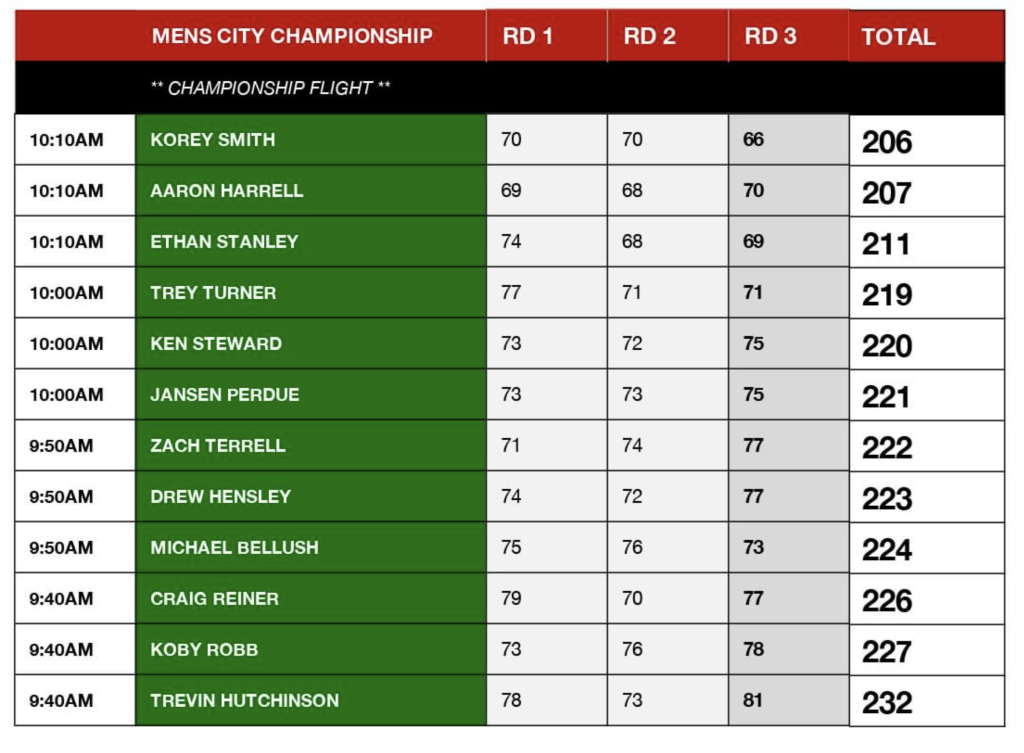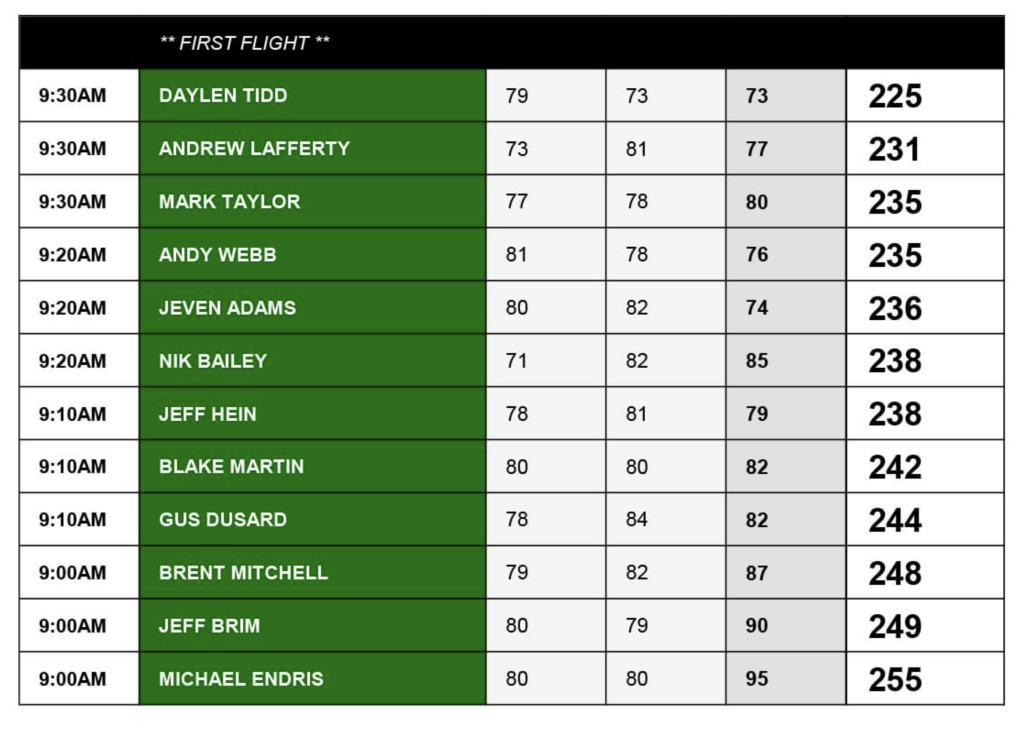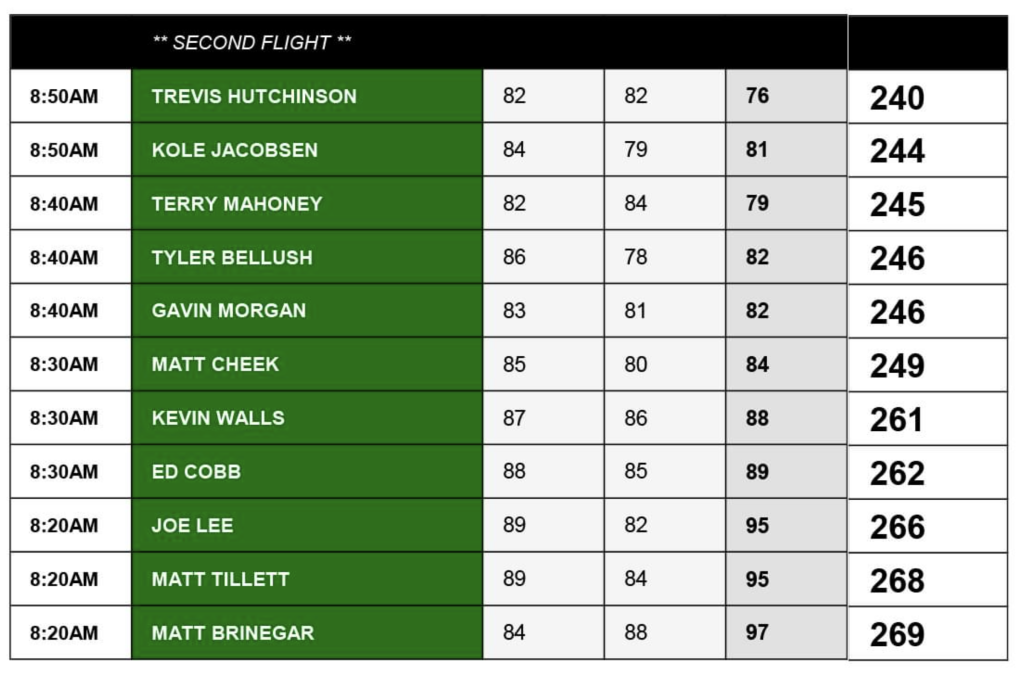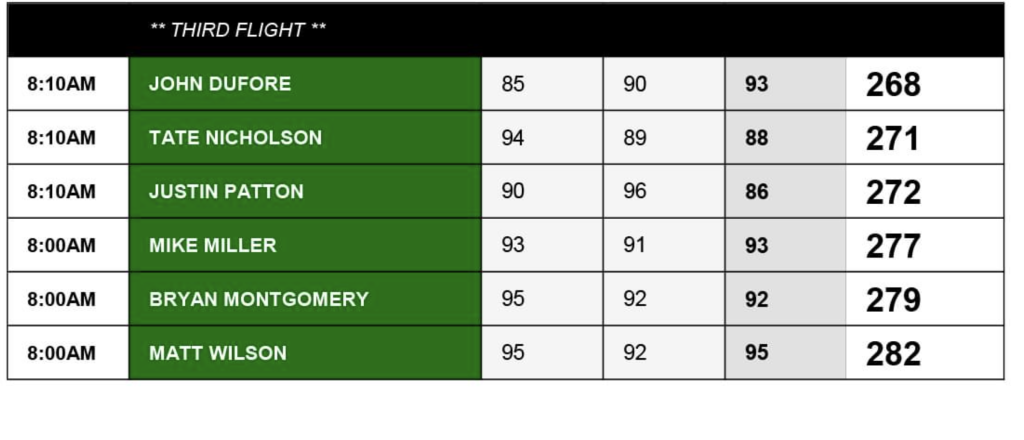

By Justin Sokeland
WBIW.com
BEDFORD – How can something so soggy and steamy get burned to a crisp? Moisture is a fire retardant, and Otis Park was dripping wet after a two-hour morning rain turned quickly to summer humidity, with the expected sweltering and suffering. What could possibly burn in those conditions?
The answer is Korey Smith’s putter, which blazed on the back nine and torched Aaron Harrell’s lead like kindling. Call him Mr. Fahrenheit, Smith was 200 degrees, burning through the sky above the golf course with a sensational close to the third round.
Finishing a remarkable turnaround with four birdies on the final six holes, Smith flamed on with a 6-under 66 on Saturday, erasing a five-shot deficit and exploding to the lead for the final round of the Bedford Men’s City Golf Tournament. See the smoke? That’s not the Canadian wildfires, that’s the Smith contrail after his charge from distant threat to dangerous frontrunner.
Smith, a newcomer in his first City tournament, concluded 54 holes at 10-under 206, one shot ahead of Harrell (with Ethan Stanley also lurking after his solid third round) as they head into Sunday’s final tour. Harrell, looking to become the fifth man to win five City crowns, was in position to pull away to another title – until a surprising stumble in Death Valley gave Smith new life. And wow, was that resurrection impressive.
When the final threesome stepped on the 13th tee, Harrell was 11-under for the event and five shots in front. After the respectful handshakes on the 18th green, a new leader had emerged. Smith erupted with birdies on holes 13, 14, 16 and 17, while Harrell suffered some heat stroke with a double-bogey on the nasty-tempered 14th hole. That three-shot swing between the leaders gave Smith momentum for his race to the clubhouse.
“That really got me going,” Smith said. “I knew I had to stay on it, step on it. You can’t let off. I hit the ground running.”
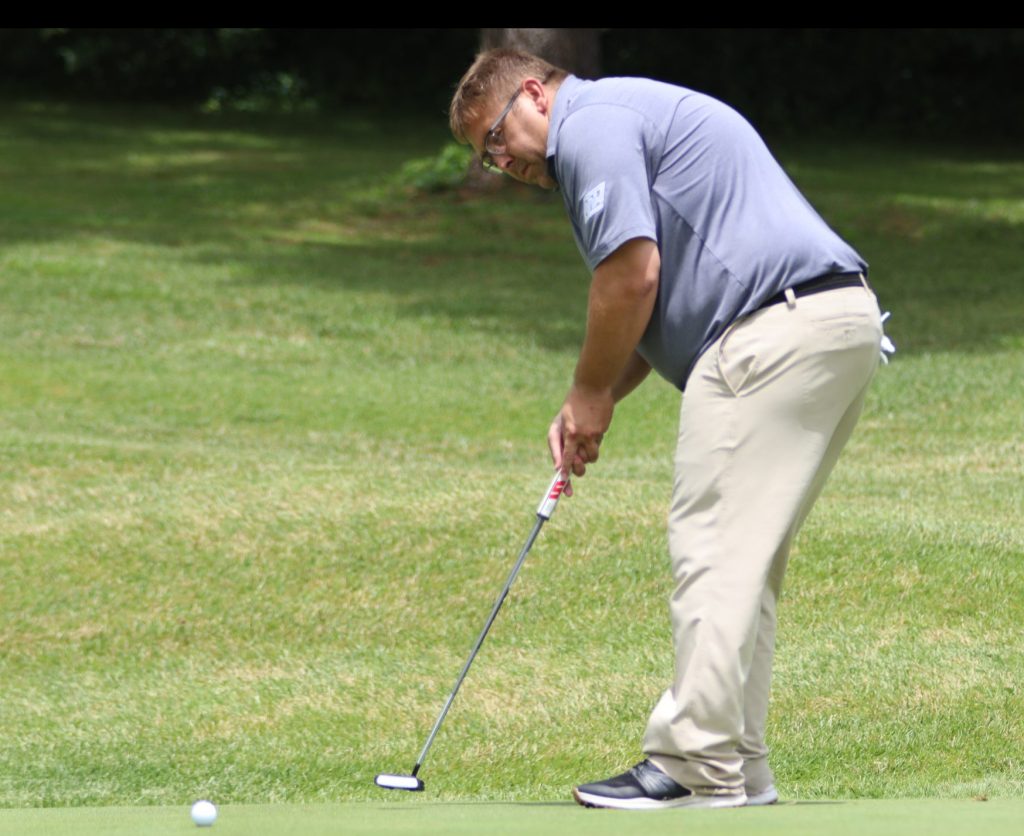
Don’t stop him now, he was having a good time. After a thunderous tee shot just short of the 13th green, he pitched up to three feet. That’s one. On 14, his wedge from inside 100 yards danced all around the flagstick before stopping two feet away. That’s two. On the downhill 16th, his wedge from the flat bottom landing area skipped to 8 feet. That’s three. And finally on 17, after getting within 20 yards of the par-5 in two, he lofted another superb pitch to five feet. That was for the lead.
After calling the back nine his nemesis during the first two rounds, Smith made up for last ground with a second-side 31. Lost in that amazing run was the fact he made three birdies on the front (holes 2, 5 and 7, offsetting a bogey on the devilish third).
“I finally got the back nine,” he said. “Made some putts, not some crazy putts but ones you’re supposed to make. Back in the day, I would just stop. I didn’t want to do that. I wanted to stay aggressive.”
For most of the day, aside from the weather, the story was Harrell, who borrowed a putter from friend Andy Fortner (perhaps it was sprinkled with some magic morning dust) and ignored the rain for a hot start. After complaining about his lack of confidence in the putter during the first two rounds, he jarred a 50-footer for birdie on the first, ripped home a 30-footer for eagle on the fifth, and dropped a soft 25-footer from the front fringe for birdie on the eighth. He spun back a wedge to 8 feet for birdie on the 11th, and it was obvious Fortner wasn’t getting the weapon back any time soon.
In fact, Harrell had two putters in the bag (taking out another club to make sure he was within the 14-club limit), so maybe the Bob Knight theory of a benching being the best motivation for improved performance applies to the flat stick. Although, a good putter can make them with a hickory stick.
That last birdie got him to 11-under for the event and five in front.

Then came a second lengthy wait on the tee, this time on the 14th. Harrell’s shot link on that hole was not pretty. A one-handed follow through with a shaky iron off the tee. A blocked iron shot short and right of the green. Then not one, but two dumped pitch shots short of the surface. Finally a chip and a putt, but the damage was done. Blame it on Death Valley, where the air is hot and heavy, where many rounds have gone to die.
“We hit a wall,” Harrell said. “I don’t know what happened, it got really hot down in the valley. That just took it out of me, and I was trying to get home in as few shots as I could. It was a grind to do that.”
Since there’s no defense allowed in golf, Harrell could only watch and appreciate the Smith move to the lead. Not that Harrell played poorly, because his 2-under 70 was only bested by two others in the Championship Flight. Of course, they were both in his group.
“It was fun to watch. He played great,” he said. “I don’t know if I can keep up with that many birdies. He putts it so well.”
Overshadowed by the jockeying in front, Stanley quietly surged as well, firing a 3-under 69 with birdies on 1, 9 (an exquisite wedge to 3 feet above the cup), 12 (a sliding 15-footer) and 13 (a six-footer) plus an eagle on the fifth. His issue was the shots he gave back.
“It’s more bogey avoidance for me than making a bunch of birdies, because I know they’ll come,” Stanley said. “I know I can get the putter hot and make some birdies. It’s fairways and greens, eliminating mistakes. Birdies are out there, if you don’t make any bogeys.“
So that sets the tone for a most interesting final round. Strategy? “Come out and play golf,” Harrell said. “That’s it. Hit it, go find it and hit it again. It’ll be fun.”
“I have to go with the same mindset,” said Smith, whose unorthodox pre-shot routine and left-handed grip will be tested in final-day heat for the first time since his college career at Austin Peay. “We’re going to make birdies. Hopefully I make more.”

